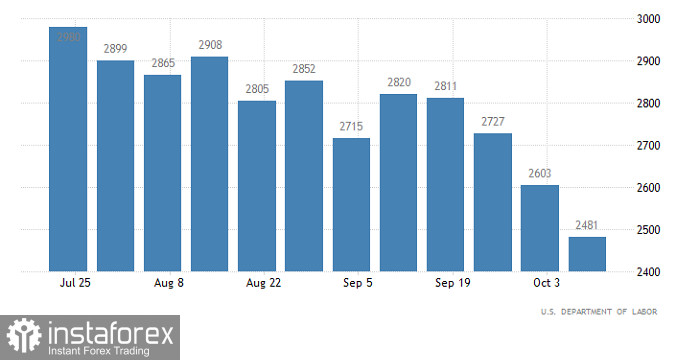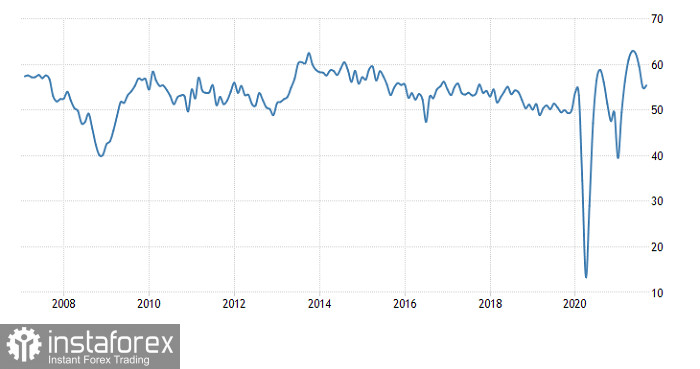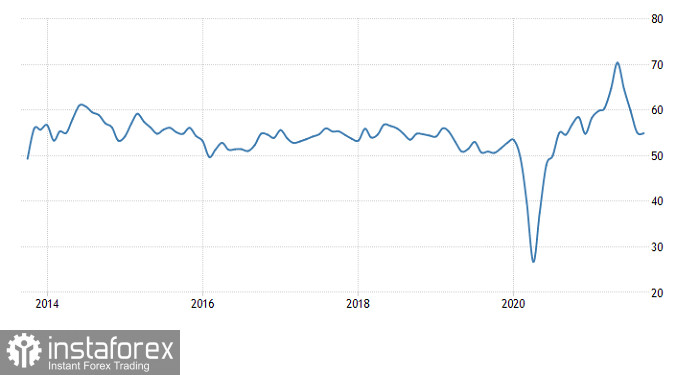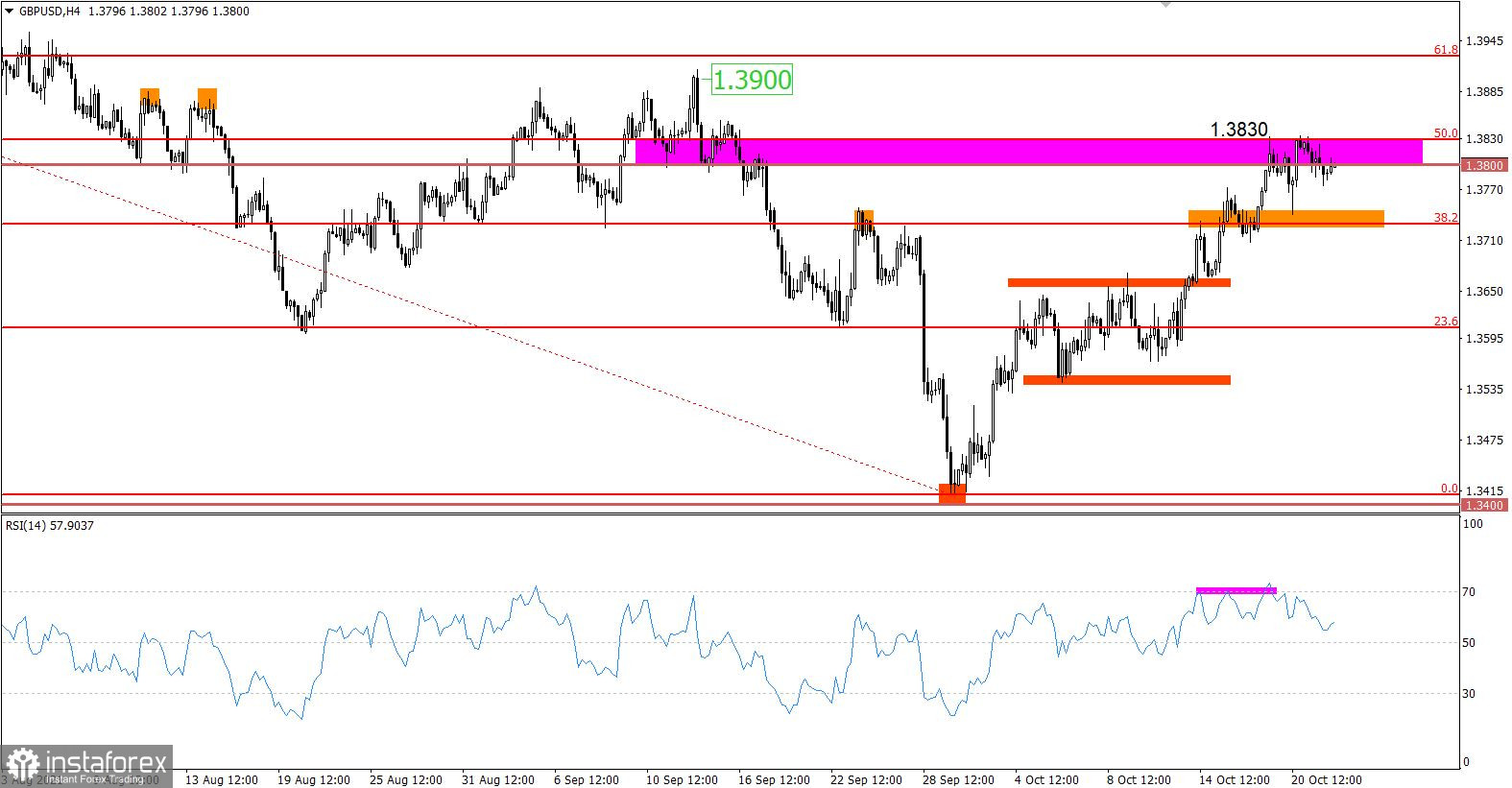Although the number of repeated applications for unemployment benefits in the United States fell to 2,481,000, instead of 2,475,000, the data on claims turned out to be significantly better than forecasted. Partly due to the fact that the previous results on repeat applications were revised upwards, from 2,593,000 to 2,603,000. So their number decreased by 122,000, while 118,000 were expected. Moreover, the number of initial applications, instead of increasing by 2,000, decreased by 6,000. This became possible due to the revision of previous data from 293,000 to 296,000. As a result, their number decreased to 290,000, although 295,000 were predicted. So that the US labor market continues to improve, and it is not surprising that the dollar has begun to gain ground again. After all, the state of the labor market is, probably, the primary factor in determining the parameters of monetary policy, therefore, nothing prevents the Federal Reserve from starting to wind down the quantitative easing program.
Number of re-claims for unemployment benefits (United States):

Today, the pound may begin to lose its positions with a vengeance, and it will have only its own British macroeconomic statistics to blame for this. First of all, we are talking about retail sales, the data for which have just been published. It was expected that zero growth will be replaced by a decline of 0.4%, which looks simply terrifying. After all, the whole last year, the British economy was closed for a lockdown, and many stores simply did not work. And it turns out that a year later, sales only decreased. But in reality, everything turned out much worse, since the rate of decline in retail sales amounted to as much as 1.3%. In monthly terms, they decreased by 0.2%, although they expected their growth by 0.5%. So the British economy is clearly starting to slip. In addition, preliminary estimates of business activity indices are published today, forecasts for which are also not optimistic. For example, the index of business activity in the service sector should be reduced from 55.4 points to 54.7 points. The manufacturing index may decrease from 57.1 points to 55.9 points.
Services PMI (UK):

But forecasts for similar data in the United States are not so pessimistic. The index of business activity in the manufacturing sector should decrease from 60.7 points to 60.4 points. The index of business activity in the service sector can grow from 54.9 points to 55.1 points. And as you can see, forecasts in the United States are somewhat more optimistic. And the value of the declining manufacturing index is still extremely high. Moreover, the growth should show the most significant index of business activity. Thus, it is logical to expect a further gradual strengthening of the dollar's position.
Services PMI (United States):

The GBPUSD currency pair is moving in the resistance area of 1.3800/1.3830, consistently reducing the volume of long positions. The downward interest is amplified by the Fibonacci level of 50.0, which is intertwined with the resistance area.
The RSI technical instrument in the four-hour period moves in the upper part of the 50/70 indicator. This signals a predominant interest in long positions.
On the daily chart, there is a corrective move from the support level of 1.3400. Despite the scale of the strengthening of the British currency, the trend is still downward from the beginning of June.
Expectations and prospects:
It can be assumed that the pound is on the verge of changing trading interests, as indicated by a slowdown in the upward movement. If the technical signal is confirmed, we may see a gradual weakening of the British currency, where the first reference point will be the value of 1.3730.
An alternative scenario will be considered if the price stays above the resistance area. This will lead to the prolongation of the correction move towards the value of 1.3900.
Comprehensive indicator analysis gives a sell signal based on short-term and intraday periods due to the price rebound from the resistance area.

 English
English 
 Русский
Русский Bahasa Indonesia
Bahasa Indonesia Bahasa Malay
Bahasa Malay ไทย
ไทย Español
Español Deutsch
Deutsch Български
Български Français
Français Tiếng Việt
Tiếng Việt 中文
中文 বাংলা
বাংলা हिन्दी
हिन्दी Čeština
Čeština Українська
Українська Română
Română

